Introduction
Nestled in the heart of the Saqqara necropolis, northwest of the iconic Pyramid of Djoser, lies a captivating archaeological site that has puzzled researchers for centuries – the Serapeum of Saqqara. This ancient burial ground, constructed around 1300 BC during the reign of Ramesses II, served as the final resting place for the sacred Apis bulls, revered manifestations of the Egyptian god Ptah.

The Serapeum is a true testament to the advanced engineering prowess of the ancient Egyptians, showcasing their mastery of geometry, mathematics, and the ability to manipulate massive stone structures with unparalleled precision. The site’s most striking features are the 25 colossal stone sarcophagi, each weighing between 70 to 100 tons, that have captivated the imagination of historians, archaeologists, and curious minds alike.
In this comprehensive blog post, we will delve into the intriguing history and mysteries surrounding the Serapeum of Saqqara, exploring the construction techniques, the purpose of the empty sarcophagi, and the enduring legacy of this remarkable ancient site.
The Serapeum of Saqqara: A Necropolis for the Apis Bulls
The Serapeum of Saqqara was a sacred necropolis dedicated to the veneration of the Apis bulls, which were considered living manifestations of the Egyptian god Ptah. These revered creatures were believed to be the physical embodiment of Ptah, the god of creation, craftsmanship, and Memphis, the ancient capital of Egypt.
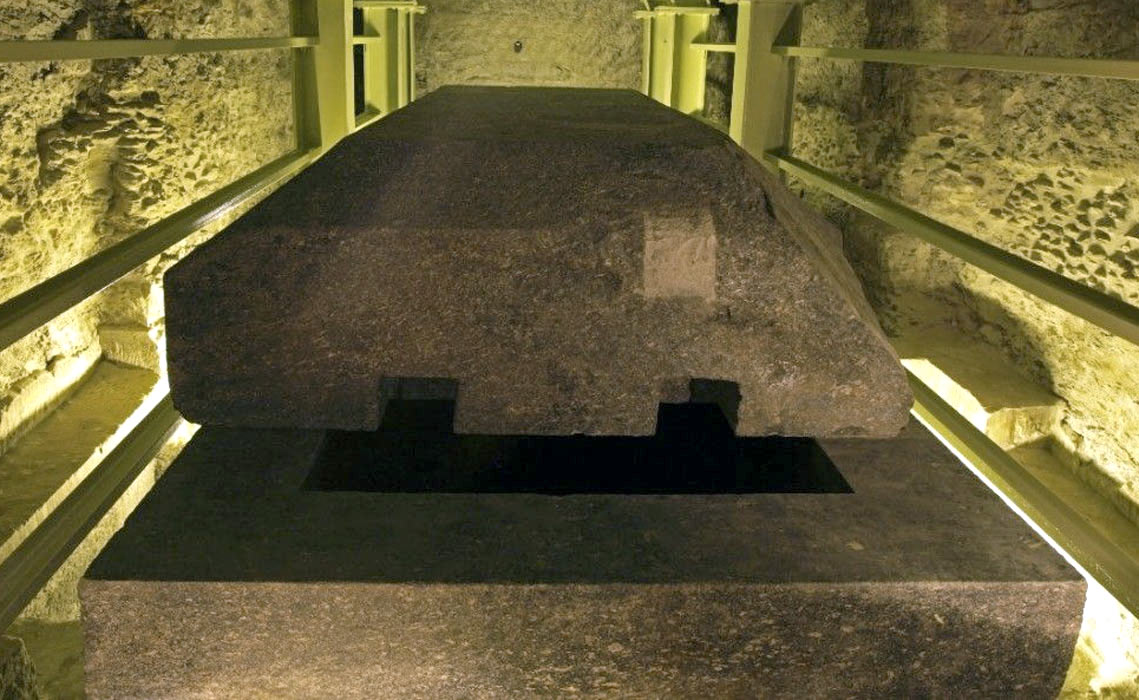
During their lifetime, the Apis bulls were treated with the utmost care and reverence, residing in a special temple complex within the city of Memphis. Upon their death, the Apis bulls were mummified and interred in the Serapeum, a vast underground necropolis designed to house their remains.
The construction of the Serapeum is believed to have begun during the reign of Amenhotep III, but it was Ramesses II who oversaw the majority of the site’s development around 1300 BC. The necropolis was designed as a series of underground galleries and chambers, with the massive stone sarcophagi serving as the final resting places for the Apis bulls.
The Colossal Sarcophagi: Feats of Ancient Egyptian Engineering
The most striking and puzzling features of the Serapeum of Saqqara are the 25 colossal stone sarcophagi that line the underground galleries. These massive structures, each weighing between 70 to 100 tons, are a true testament to the advanced engineering capabilities of the ancient Egyptians.
The sarcophagi are primarily made of rose granite or the even harder diorite, materials sourced from quarries hundreds of kilometers away. The sheer scale and weight of these structures are mind-boggling, as the ancient Egyptians had to transport and precisely position these massive blocks of stone with limited technological resources.
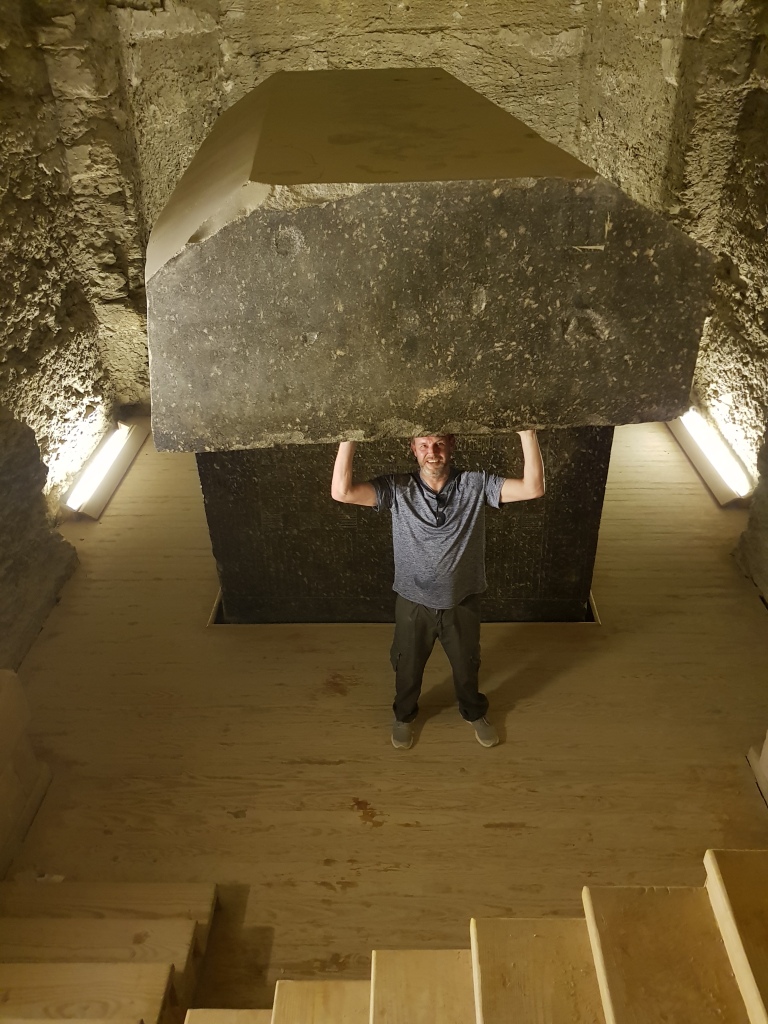
What truly sets these sarcophagi apart is the astounding level of precision in their construction. Deviations in the dimensions of the sarcophagi are measured in mere thousandths of an inch, a feat that would be challenging even with modern machinery and tools. This level of precision suggests that the ancient Egyptians had a deep understanding of geometry, mathematics, and the properties of the materials they were working with.
The precision and craftsmanship of the Serapeum sarcophagi have long puzzled researchers, leading to numerous theories and speculations about the techniques and tools used in their creation. Some have suggested the use of advanced levitation or even extraterrestrial assistance, while others have proposed more grounded explanations involving the use of levers, pulleys, and other primitive engineering methods.
The Mystery of the Empty Sarcophagi
One of the most intriguing aspects of the Serapeum of Saqqara is the fact that many of the colossal sarcophagi were found empty upon their discovery in the 19th century. This has led to a host of theories and speculations about the true purpose and function of these magnificent structures.
Some scholars believe that the empty sarcophagi were not intended to hold the remains of the Apis bulls at all, but rather served as symbolic or ceremonial monuments. The idea is that the Apis bulls were mummified and interred elsewhere, with the Serapeum serving as a grand, sacred site for the veneration and commemoration of these revered creatures.
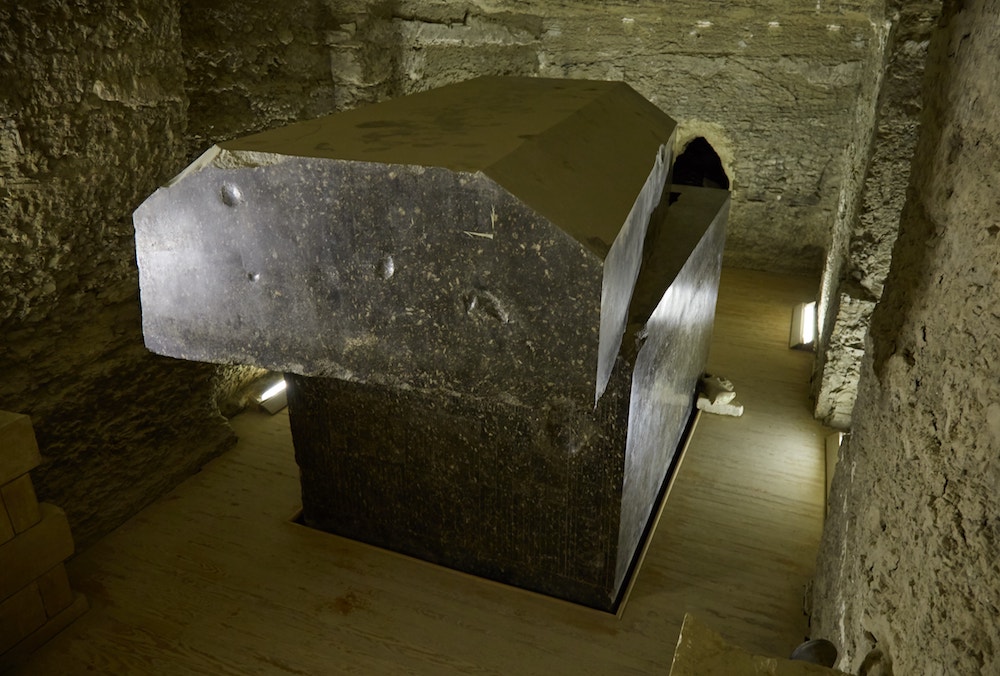
Another theory suggests that the empty sarcophagi were designed to hold the remains of the Apis bulls, but that the mummies were subsequently removed or looted over the centuries. This could be due to a variety of factors, such as political upheaval, religious changes, or the desire to plunder the valuable artifacts and materials within the sarcophagi.
Regardless of the exact reason, the presence of these empty, yet meticulously crafted, sarcophagi continues to fuel the ongoing mystery and fascination surrounding the Serapeum of Saqqara. Researchers continue to explore and analyze the site, hoping to uncover new clues that might shed light on the true purpose and function of these enigmatic structures.
The Quarrying and Transportation of the Sarcophagi
One of the most remarkable aspects of the Serapeum sarcophagi is the sheer scale and weight of the individual blocks, as well as the distance from which the materials were sourced. The rose granite and diorite used in the construction of the sarcophagi were quarried from sites hundreds of kilometers away, posing a significant logistical challenge for the ancient Egyptians.
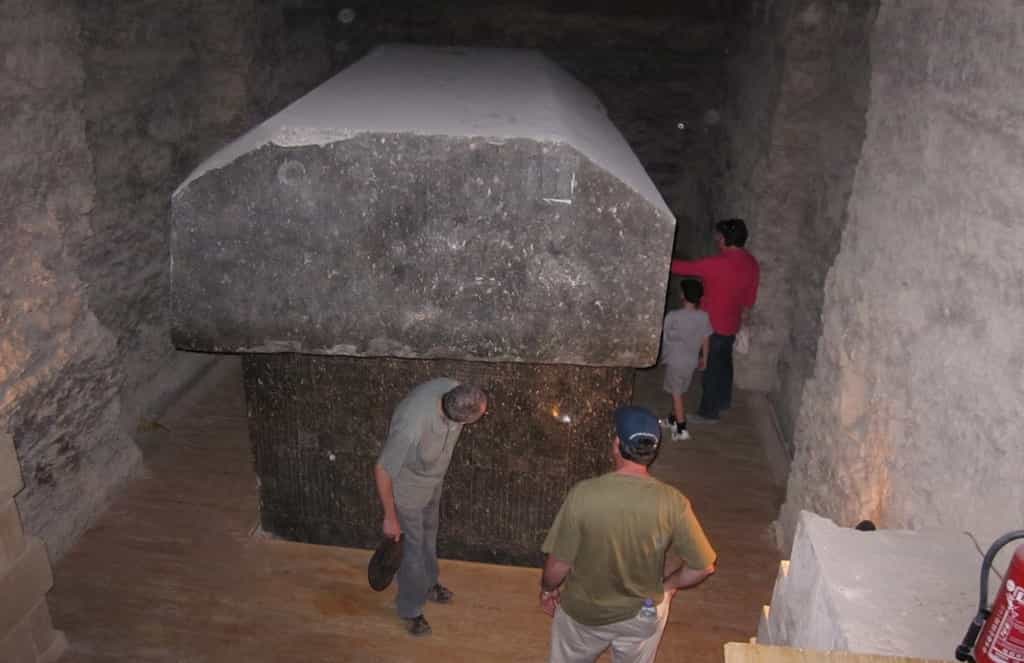
The process of quarrying and transporting these massive stones would have required a tremendous amount of manpower, specialized tools, and advanced engineering techniques. Researchers have proposed various methods that the ancient Egyptians may have employed, including the use of levers, pulleys, and even the construction of temporary ramps or causeways to facilitate the movement of the heavy blocks.
The precision with which the sarcophagi were cut and assembled further suggests that the ancient Egyptians had a deep understanding of the properties of the materials they were working with, as well as the ability to plan and execute complex construction projects with a high degree of accuracy.
While the exact techniques used in the quarrying and transportation of the Serapeum sarcophagi remain a mystery, the sheer scale and complexity of the task are a testament to the engineering prowess and organizational capabilities of the ancient Egyptian civilization.
The Significance of the Serapeum in Ancient Egyptian Religion and Culture
The Serapeum of Saqqara held immense significance within the broader context of ancient Egyptian religion and culture. As the final resting place for the Apis bulls, the site was considered a sacred and revered space, where the physical embodiment of the god Ptah was venerated and honored.
The Apis bulls were believed to be living manifestations of Ptah, the god of creation, craftsmanship, and the city of Memphis, which served as the ancient capital of Egypt. The death of an Apis bull was seen as a significant event, and the mummification and interment of the creature in the Serapeum was a highly ritualized process that was integral to the religious beliefs and practices of the time.
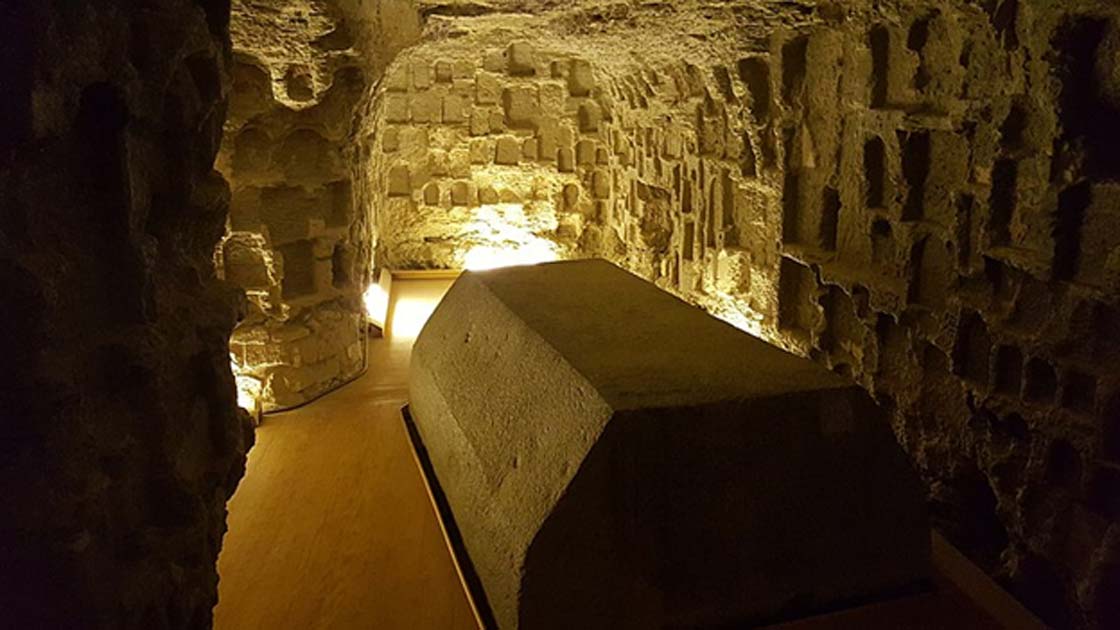
The Serapeum was not just a necropolis, but also a site of pilgrimage and worship. Visitors from across Egypt and beyond would come to the Serapeum to pay their respects to the Apis bulls, seeking blessings, guidance, and divine intervention. The site was also closely associated with the cult of Serapis, a Graeco-Egyptian deity who was a combination of the Egyptian god Osiris and the Greek god Apis.
The significance of the Serapeum extended beyond its religious function, as it also played a role in the cultural and political landscape of ancient Egypt. The site was located in close proximity to the city of Memphis, which served as the administrative and cultural center of the Egyptian empire for much of its history. The Serapeum’s proximity to this important urban center further underscores its prominence and the reverence with which it was held by the ancient Egyptians.
Rediscovery and Ongoing Investigations
The Serapeum of Saqqara remained largely forgotten and undiscovered for centuries, until it was rediscovered in 1850 by the French Egyptologist Auguste Mariette. Mariette’s excavation of the site revealed the stunning array of colossal sarcophagi and the underlying mystery that has continued to captivate researchers and the public alike.
Since its rediscovery, the Serapeum has been the subject of extensive archaeological investigation and research, with scholars from around the world attempting to unravel the secrets of this remarkable ancient site. Advances in technology, such as the use of ground-penetrating radar and other non-invasive techniques, have allowed researchers to gain new insights into the Serapeum’s layout, construction, and potential hidden features.
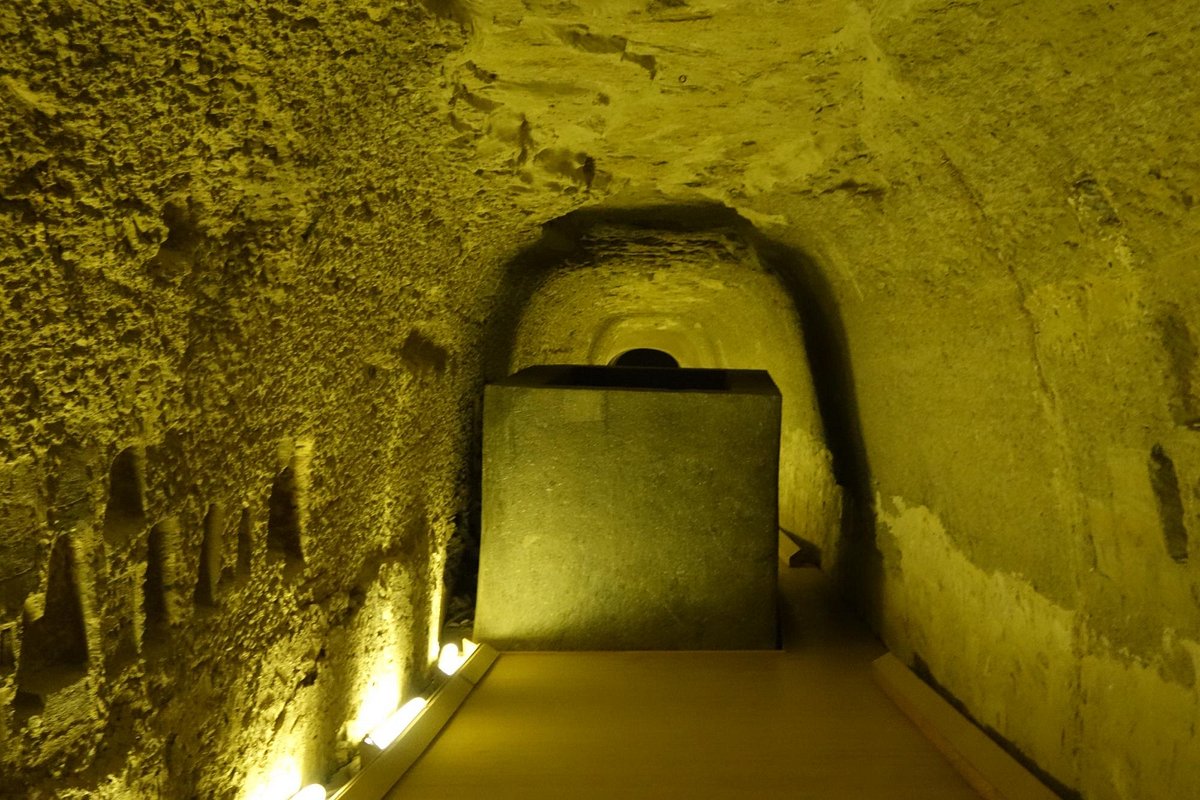
Despite the progress made in our understanding of the Serapeum, many questions remain unanswered. The precise purpose of the empty sarcophagi, the techniques used in their construction, and the broader significance of the site within the context of ancient Egyptian religion and culture continue to be the focus of ongoing research and debate.
As our knowledge of the Serapeum grows, so too does our appreciation for the engineering prowess and cultural sophistication of the ancient Egyptians. This remarkable site serves as a testament to the enduring legacy of one of the world’s most fascinating and influential civilizations.
Conclusion: Unlocking the Mysteries of the Serapeum
The Serapeum of Saqqara stands as a testament to the engineering prowess and cultural sophistication of the ancient Egyptians. From the colossal sarcophagi weighing up to 100 tons to the precise craftsmanship that defies modern understanding, this necropolis continues to captivate and puzzle researchers from around the world.
As we delve deeper into the mysteries of the Serapeum, we gain new insights into the ancient Egyptian worldview, their reverence for the divine, and their mastery of the natural and built environment. The site’s enduring legacy serves as a reminder of the remarkable achievements of this ancient civilization, and the ongoing quest to unravel its secrets.
Whether you are a student of history, an enthusiast of ancient engineering, or simply someone fascinated by the wonders of the past, the Serapeum of Saqqara is a must-visit destination that promises to ignite your imagination and deepen your appreciation for the ingenuity of the human spirit.
